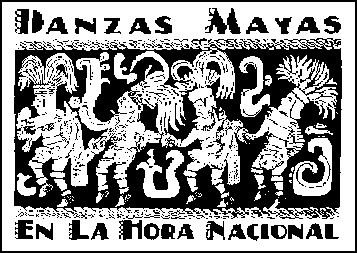Nation
Communication,
Popular Culture, and
Nationalism in Mexico
1920 - 1950
Joy Elizabeth Hayes
(Arizona)
 The first Mexican radio station went on the air in 1923, in Mexico City. It was owned by Emilio Azcárraga, who later went on to dominate Mexican radio and television so that even now, after seventy years, his stations command 80% of the listeners and viewers in the country.
The first Mexican radio station went on the air in 1923, in Mexico City. It was owned by Emilio Azcárraga, who later went on to dominate Mexican radio and television so that even now, after seventy years, his stations command 80% of the listeners and viewers in the country.The main distinction between Mexican broadcasting and our own is that in the United States, at least up the Reagan years, there were a multitude of station owners and operators. Too --- at least in the early days --- the Mexican government operated it's own outlet, XFX, in Mexico City. For the ten or so years of its life, this station provided cultural outlet: music of the people, classical music, plays, dramas, and national speeches.
In addition, up to very recently, the federal government required that all stations present, once a week, The National Hour. Those of us who are fans of Mexican radio are familiar with this, for stations on the border, rented out to gringoes, broadcasting their usual terrible rock or American pop programs, would, suddenly at 8 PM on a Sunday evening, blossom into an hour of unintelligible gibberish, voices and martial music recorded, apparently, at the bottom of a barrel.
Ms. Hayes concentrates on several events which she feels are key to the growth of Mexican broadcasting and its national culture. One was the Law of Electric Communication from 1926 which stated that only Mexican nationals could own stations, that stations must broadcast government messages free of charge. Too, they were required, unless given permission, to broadcast only in Spanish, and, finally, political discourse was not permitted: stations could not be used to attack the established government "in any way." (The only exception to this latter came about when the Communist Party took over the microphone of XEW, the country's most powerful station, and broadcast a ten minutes speech in 1931 which attacked Yankee imperialism, defended the USSR, and blamed the repressive Calles dictatorship for the misery of Mexico's masses.)
For Ms. Hayes, the key elements of Mexican radio in the 1930s and 40s were the use of the airwaves, by President Cárdenas, to drum up national support for his expropriation of the American oil companies' refineries in 1938, and the existence of CIAA --- the U. S. Office of the Coordinator of Inter-American Affairs --- which bought time on Mexican radio for WWII propaganda. It was designed, according to its own documents,
to use sound radio showmanship designed to create a flow of outstanding program attractions which would reveal the American nation as a powerful, personable, friendly, idealistic neighbor who is at war, and who will win the war.
Mexican radio is pretty terrible --- but at least it is terrible in a different way than those stations broadcasting north of the border. For many of us, Mexico radio sounds more like American radio from back when we were kids, and (except for those ghastly stations which are rented by American programmers), tends to be fairly loose. Ms. Hayes claims that early on, it was decided to use music and spoken word that was specifically in the Mexican mold, not popular slop-over from the north.
Whatever changes we see in Mexican radio and television these days is probably a result of American's ability not only plumb deeply for treacle in our own culture, but to export this trash to all other countries of the world. However, to hear corny band music and off-key mariachi as we do on many Mexican stations means that the desire to destroy creativity and life, now an accomplished fact to the north, has a way to go before it invades that country.
If you doubt this, listen someday on Julio Presiado and "Su Banda Perla de Pacifico" (the Pearl of the Pacific.) All of the songs, especially the most popular, "Qué hacer por tí?" are as funky and out- For those of us who care for Mexico and Mexicans, Ms. Hayes book is mildly interesting, but her more abstract passages, dealing with the ilk of modern theoreticians like Benedict Anderson, E. J. Hobsbawm and Terence Ranger on such subjects as "the disruptive forces of modernity," "Creole patriotism" and "order and hierarchy in...populist bourgeoise revolution" do leave some of us twiddling our fingers and feeling a bit restive and wanting to get back to the Pearl of the Pacific tootling on "Qué hacer por tí?" (What can I do for you?)